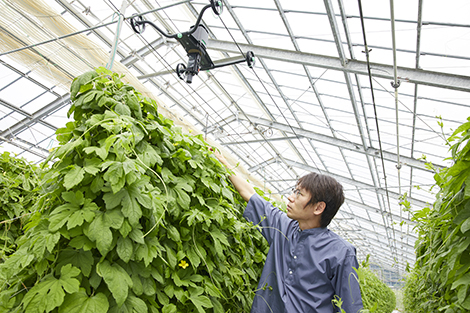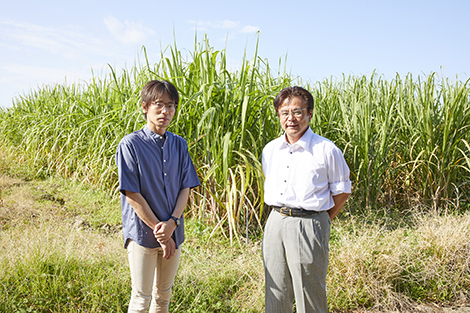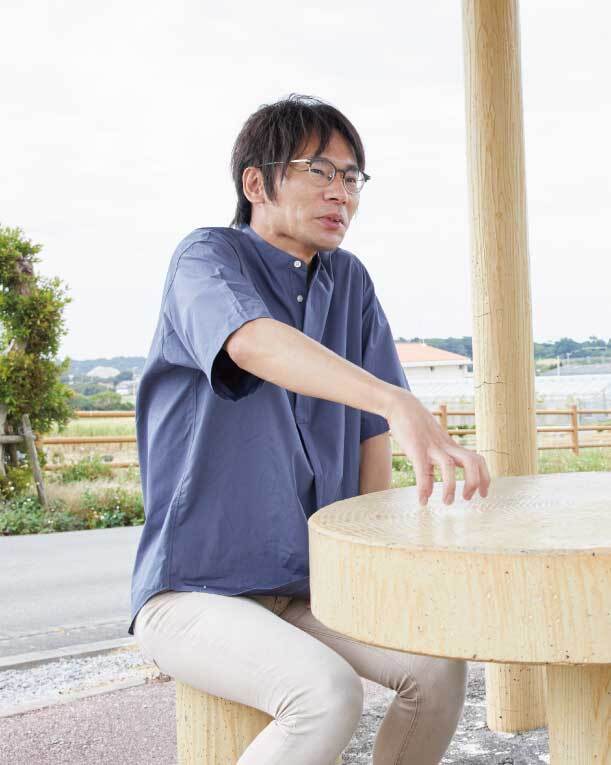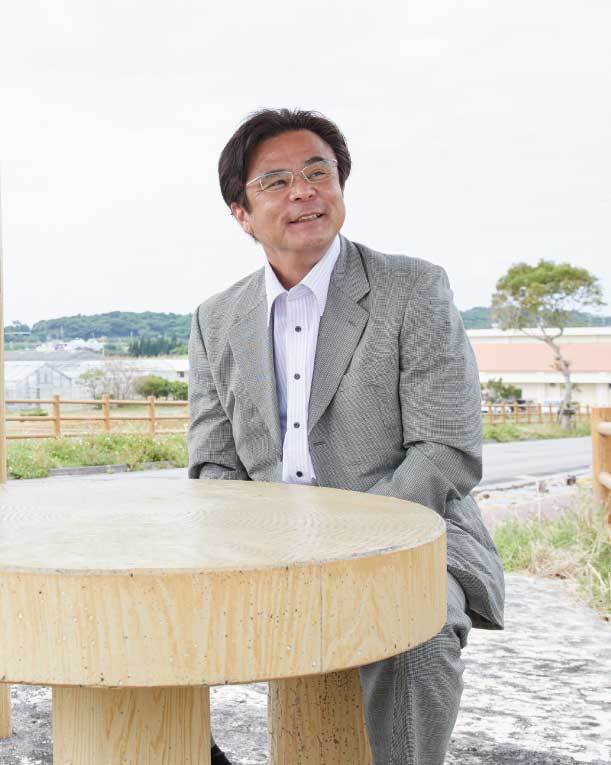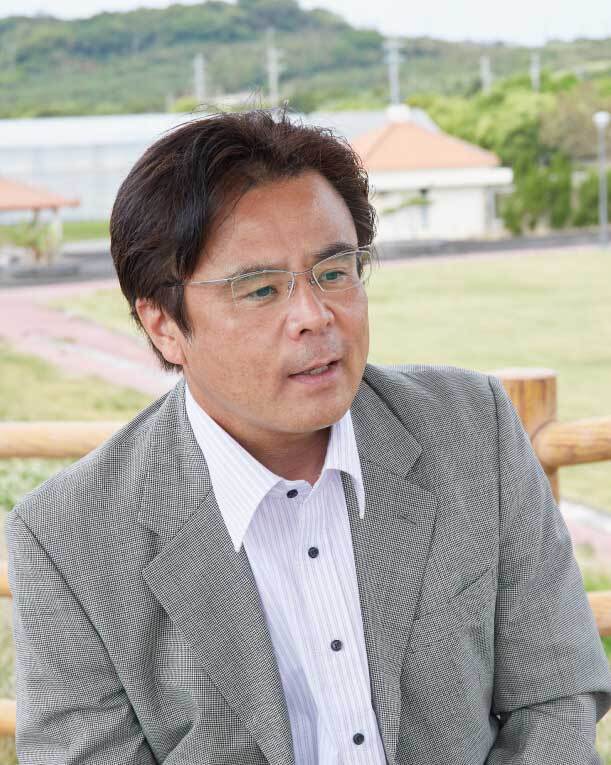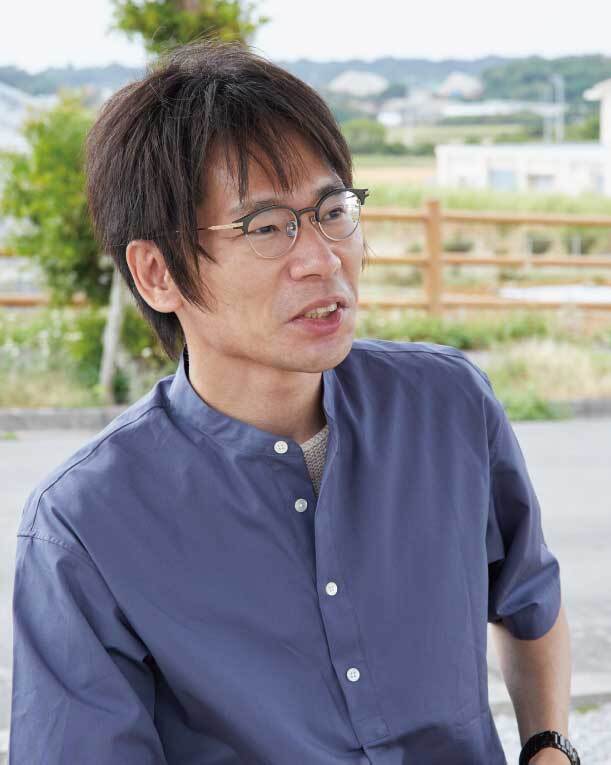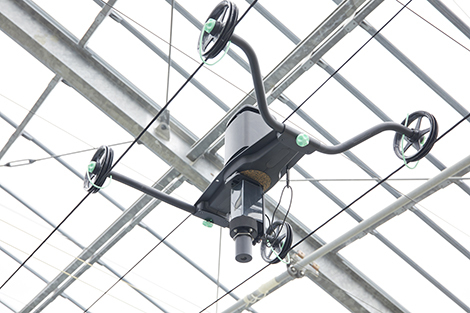In Part I, we covered how important it is to grasp the plant responses to environmental stress in growing crops. Now in Part II, we will explain how visualizing that stress can actually contribute to agriculture. We will also cover how the use of hyperspectral cameras will impact agriculture going forward. Listening to Tetsu Ogawa and Maro Tamaki talk, I started to see a vision of the kind of smart agriculture that SSS is aiming for.
── What are the strengths of this sensing technology?
(Ogawa)
Broadly speaking, there are two strengths.
The first, I think, is that everybody involved in its R&D is there because they love it, or because they want to use what they make right away. This activity involves foundational research by Tohoku University, technology development by SSS, and empirical research by the Okinawa Prefecture Agricultural Research Center. Each of these parties has as its underlying motivation the question of what we should use this on and how. We have all also patiently overcome a variety of obstacles, including costs and the difficulties of development and empirical research.
For example, in previous studies, researchers needed to take measurements twice, once before dawn and once at noon, and then subtract the results. But if you imagine doing something for yourself, your first priority would likely be research that didn’t require taking measurements before dawn. Also, conventional hyperspectral cameras require several dozen seconds to capture a single image. You don’t want to have to set up a tripod in the middle of a field with bad footing. Also, even if you manage to do so, Okinawa has strong winds that will shake the plants. In that case, you might want a camera that you can use if the subject shakes or your hand shakes when you hold it yourself. Of course, we have been doing R&D for a long time by listening to the voices of our customers, but if we are going to use it ourselves, we will try to solve it in an optimal way that goes beyond our respective positions, that is, whether it is solved by technology, research, use cases, or a combination of them. I think that this style of R&D driven by the pure desire to use it ourselves has a tremendous effect in terms of its speed and optimality in the activity of clarifying goals and finding problem-solving approaches.
The second strength of this sensing technology is that it’s SSS that has the foundational technology needed to achieve these goals. While the general hyperspectral cameras that we just mentioned require time, these cameras are capable of capturing images in a short time, simply by closing the shutter like a regular camera. SSS has fundamental optical technologies accumulated over a long history, and there are also new technologies that are currently under R&D and will be realized in the future. For this reason, the scope of our technology exploration is very wide that can be used to achieve our goals, and we are well aware of their limitations. In R&D activities such as this one, in which new and different fields of research have joined together, we believe that this has been effective in designing goals that are difficult but feasible.
(Tamaki)
Conventionally, it was common for a single leaf to be the subject when measuring the photosynthetic rate. While there are also measurement methods that target plant communities within a garden facility, these methods took time and effort as they required a large number of sensors or a special environment, for example, stopping the influx of CO2 temporarily during measurement. In recent years, it has become trendy to use sensors mounted on drones for sensing, but we are working toward a different kind of technology, a sensing technology that can use a camera to measure the plant responses to environmental stress which changes from moment to moment, or that can measure the photosynthetic rate instantly.
(Ogawa)
Our current research aims to measure a wide range of plant canopies, while using high-resolution sensing that can distinguish a single leaf, and to build an analytical process that takes into account that there are places to measure and that each place has a different physiological state. If you imagine human medicine, if you want to hear a person's heartbeat, pressing a stethoscope against a patient's hand or foot will not lead to an accurate diagnosis. Even if you press it against multiple places on a patient's back or chest, it is likely that there are differences from place to place, and that you understand why these differences occur, which leads to a diagnosis. Applying this to plants, which use their leaves to photosynthesize, it is important to understand the mechanism of what you are measuring. Through research with universities, we are covering the academic aspects of the question of where you should measure.
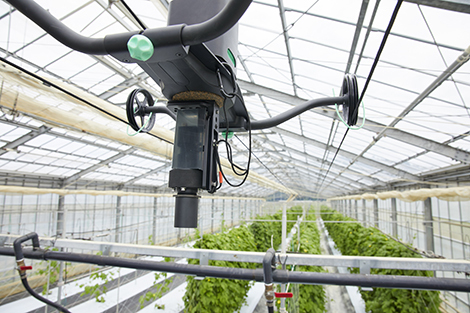
The hyperspectral cameras slated for future introduction
Expanding Application Scenarios by Compensating for Agricultural Proficiency and Increasing the Harvest through Further Improvement of Cultivars
── Tell me about the future potential of hyperspectral cameras.
(Tamaki)
We’ve been talking about measuring photosynthesis and NPQ*1 because if we can understand these two things, it should lead to understanding of many other things. If a plant’s NPQ is low but it also isn’t photosynthesizing, technology can narrow down the causes of the problem, such as disease, pests, or a problem with the plant itself. This also allows the problem to be addressed more quickly. If the countermeasure is focused on the actual problem, it can be addressed with less manpower. Therefore, we believe that this technology can contribute greatly to addressing economic issues like labor shortages and ensuring that yield can be secured regardless of experience level. It has never before been possible to grasp the situation in this way, so there are great expectations for these hyperspectral cameras.
Specifically, I feel that these hyperspectral cameras are excellent at high-resolution photography. In the composite image A below, you can identify the shape of each and every individual leaf, making it possible to confirm which ones have color. This color variation that visualizes the plant stress is what makes it possible to determine the stress condition of the plant or how it photosynthesizes. While a researcher can evaluate numerical values, that’s a difficult task for the average farmer. If you can make judgments based on leaf color variation, it means that anyone should be able to use this technology.
We also think that these cameras will play a role in the area of breeding. Photosynthesis is an important aspect of growing large produce that grows quickly, and as a result of cultivar improvement, you can use a camera to measure how something is growing, which can provide technological support. If you’re trying to improve a breeding to be more stress-resistant, they can use this technology to measure and compare it with actual previous cultivars on the field level, leading to more precise testing.
*1) Non-photochemical quenching: A mechanism of dissipating the collected light energy as heat, without photosynthesizing it.
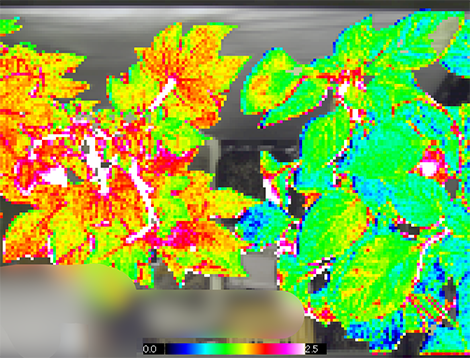
Composite image A
── What kind of expectations does the Okinawa Agricultural Research Center have for SSS going forward?
(Tamaki)
Normally, our standard methods of testing generate expected results to an extent as long as we proceed according to research designs. The same goes for product development in that, in most cases, prototypes are modeled on some existing products and developed by adding new ideas rather than creating something totally new from scratch. However, while this effort by SSS uses cutting-edge technology, it also faces new problems in the course of the work. These unanticipated problems have to be solved one after another. I believe that these new problems and discoveries will be useful in the future, so I look forward to continuing to tackle them together.
── How will SSS be involved in smart agriculture going forward?
(Ogawa)
Beyond raising productivity at agricultural business sites, SSS also has the perspective of contributing to the global environment. For example, if you over-fertilize crops, the excess fertilizer can run off into rivers and pollute the waters. We believe that protecting the environment while effectively using the earth's limited resources is an important contribution we should make.
And, on a personal level, keeping a kitchen garden is a hobby of mine, so I’m really enjoying this research, and I would like to produce major results so that SSS and Okinawa Prefecture can give back to the agricultural industry.
(Tamaki)
Ogawa strikes me with his great passion. Working with someone like him makes the whole experience of research and development very exciting. It's an honor to continue our collaboration in the future.

